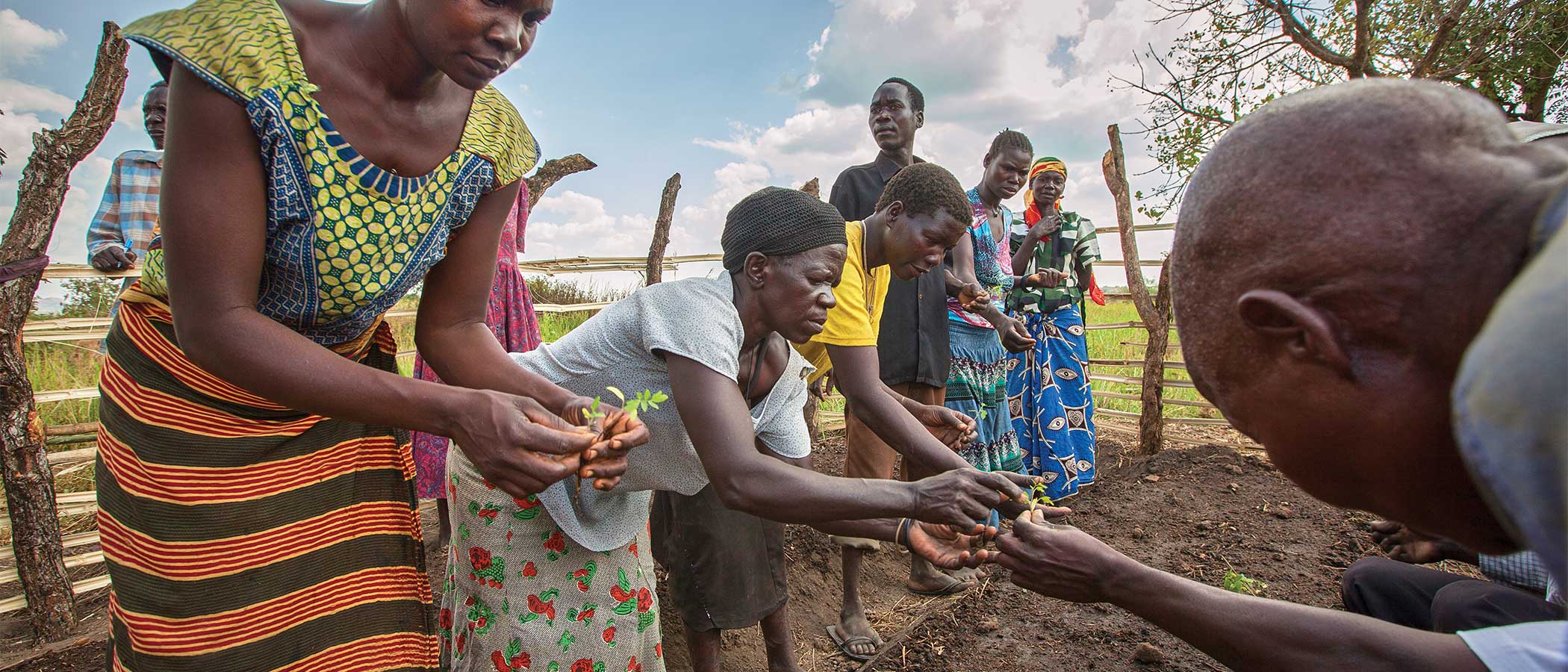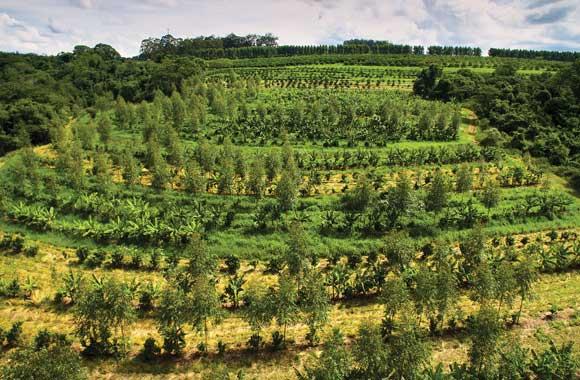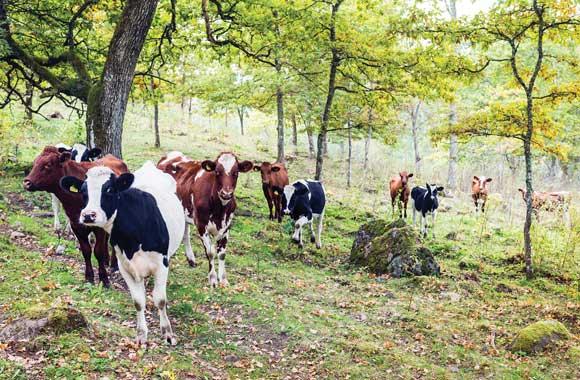Abandoned Farmland Restoration
Restoration can bring degraded farmland back into productivity and sequester carbon in the process.
Reduced/Sequestered
2020–2050
To Implement
Operational Savings
Impact
Worldwide, millions of hectares of farmland have been abandoned due to land degradation. We project that by 2050, 189.51–296.12 million hectares could be restored and converted to regenerative annual cropping or other productive, carbon-friendly farming systems, reducing carbon dioxide equivalent emissions by 12.48–20.32 gigatons. This solution could provide a lifetime net profit of US$2.66–4.34 trillion with an initial investment of US$98.16–159.91 billion and lifetime net operational cost of US$3.24–5.27 trillion, while producing an additional 9.2–15 billion metric tons of food.
Introduction
Around the world, farmers are walking away from lands that were once cultivated or grazed because those lands have been “farmed out.” The causes range from damaging agricultural practices to desertification, from lack of market access to migration, and from higher cost of cultivation to lower productivity gains. The loss of agricultural productivity poses a serious threat to food security. By releasing carbon from soil and biomass, degradation increases greenhouse gas concentrations in the atmosphere.
The Abandoned Farmland Restoration solution is a set of processes for restoring degraded, abandoned land to a productive, carbon-sequestering state. This solution replaces the conventional practice of abandoning degraded grassland.
Restoring degraded lands to productivity can simultaneously improve food security, farmers’ livelihoods, ecosystem health, and carbon sequestration. It can also reduce emissions by reducing deforestation, though that impact is not modeled here. This model looks only at agricultural restoration, though abandoned farmland can also be restored to forests and other ecosystems.
Given the urgency of preventing emissions from deforestation and increased global food demand, abandoned farmland restoration is highly desirable. Its impressive carbon sequestration potential, along with these co-benefits, makes it an essential climate solution.
Methodology
Total Land Area
To evaluate the extent to which a Food, Agriculture, and Land Use sector solution can reduce greenhouse gas emissions and sequester carbon, we need to identify the total land area available for that solution. To avoid double counting, we use an integration model that allocates land area among all of the sector’s solutions. This involves two steps. First, we classify the global land area into agroecological zones (AEZs) based on the land cover, soil quality, and slope and assign AEZs to different thermal moisture regimes. We then classify the AEZs into “degraded” and “nondegraded.” Second, we allocate the solutions to AEZs, with the solution most suited to a given AEZ or sets of AEZs assigned first, followed by the second-most-suited solution, and so on. Because it’s hard to predict future changes, we assume the total land area remains constant. Total land areas represent both the implementation and functional unit.
The total land area available for the abandoned farmland restoration solution is 371 million hectares of degraded grasslands.
Current adoption is defined as the amount of functional demand supplied by the solution in 2018. Our literature review (based on three data points from three sources) found 20 million hectares area under active restoration globally. We use this number for current adoption of the Abandoned Farmland Restoration solution.
We assume that restoration takes one year, after which the land returns to production. Once land is restored, it will be brought under regenerative agricultural practices.
Adoption Scenarios
Although abandoned farmland can also be restored to forests and other ecosystems, this model looks only at agricultural restoration.
Projections for the adoption of the Abandoned Farmland Restoration solution are unavailable. However, published targets are available for abandoned farmland, which is a subset of degraded farmland. Given the absence of targeted data, this study assumes that both abandoned and degraded land will follow similar trends. Thus, we developed six custom adoption scenarios based on the Intergovernmental Panel on Climate Change (IPCC), the UN Environment Programme (UNEP)’s 2013 low and high targets for restoration of degraded land, and historical trends for China, EU, and Kazakhstan.
We calculated impacts of increased adoption of the Abandoned Farmland Restoration solution from 2020 to 2050 by comparing two scenarios with a reference scenario in which the market share was fixed at current levels.
- Scenario 1: 189.51 million hectares of abandoned farmland are restored, based on the average of the six custom adoption scenarios. This represents 51 percent of the total available land area.
- Scenario 2: 296.12 million hectares of abandoned farmland are restored, based on the high estimates of the six custom adoption scenarios. This represents 79.85 percent of the total available land area.
Sequestration Model
We set carbon sequestration rates at 1.3 metric tons carbon per hectare per year, based on meta-analysis of 31 data points from four sources.
Financial Model
All monetary values are presented in 2014 US$.
The first cost was US$561.6 per hectare, based on the meta-analysis of 17 data points from five sources. Because we assumed the land had been abandoned for some time, there was no conventional first cost for comparison. We took the net profit margin and operational cost from the model used for our Regenerative Annual Cropping solution because we assumed the restored land would eventually adopt regenerative annual cropping practices.
Integration
In allocating land to solutions by Agro-Ecological Zone, we assumed that abandoned farmland is currently degraded grassland.
Results
Under Scenario 1, the Abandoned Farmland Restoration solution sequesters 12.48 gigatons of carbon dioxide equivalent by 2050. The marginal first cost is US$98.16 billion, the lifetime operational cost is US$3.24 trillion, and the lifetime net profit is US$2.66 trillion. The total crop yield from the restored land is 9.2 billion metric tons between 2020 and 2050.
Under Scenario 2, this solution sequesters 20.32 gigatons of carbon dioxide equivalent by 2050. The marginal first cost is US$159.91 billion, the lifetime operational cost is US$5.27 trillion, and the lifetime net profit is US$4.34 trillion. The total yield of food from the restored land is 15 billion metric tons between 2020 and 2050.
Discussion
Benchmarks
Projected impacts for this solution align very closely with IPCC projections for the restoration of degraded land. The IPCC estimates 0.1–0.7 gigatons of carbon dioxide equivalent sequestered by restored degraded land per year by 2030 (Smith, 2007), while our model showed 0.3–0.5 gigatons per year in 2030, well within the benchmark range.
Limitations
To better estimate the impact of this solution, it would be useful to further investigate how abandoned farmland is categorized and how it is distinct from degraded lands in general.
Conclusion
It is somewhat embarrassing for humanity that we continue to clear land for agriculture while leaving degraded, once-fertile lands behind in an abandoned state. The multiple benefits associated with restoring abandoned farmland provide strong incentive to bring these lands back into production and care for them thereafter.
Reference
Smith, P. D., Z. Martino, D Cai, and H Gwary. 2007. “Agriculture.” In Climate Change 2007: Mitigation of Climate Change: Contribution of Working Group III to the Fourth Assessment Report of the Intergovernmental Panel on Climate Change, edited by Bert Metz. Cambridge; New York: Cambridge University Press. http://www.ipcc.ch/pdf/assessmentreport/ar4/wg3/ar4-wg3-chapter8.pdf.
What You Can Do
If you own degraded, abandoned farmland, work with agriculture specialists to help restore its fertility and productivity.
Encourage your government to provide incentives for restoring degraded land to healthy production or habitat.
- Expand your knowledge by exploring another Drawdown solution.
Co-benefits
Through sequestration of carbon this solution has the added benefits of improving air and water quality, reducing risks of extreme climate events, and improving mental health.
Ecosystems can be restored to preserve biodiversity, which improves planetary health.
Addressing food security through restoring productive land can benefit nutrition and reduce obesity.
Increasing productive land is associated with increasing income and work, which can improve equity and reduce poverty.











